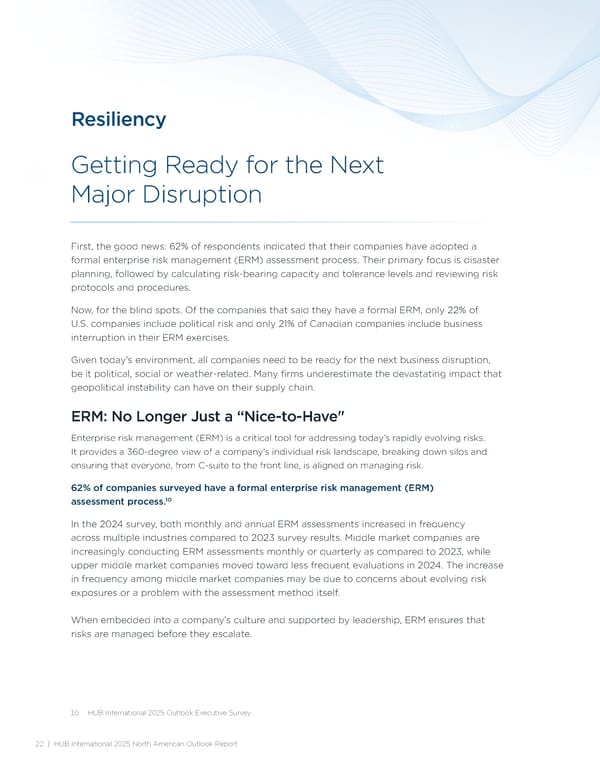Resiliency Getting Ready for the Next Major Disruption First, the good news: 62% of respondents indicated that their companies have adopted a formal enterprise risk management (ERM) assessment process. Their primary focus is disaster planning, followed by calculating risk-bearing capacity and tolerance levels and reviewing risk protocols and procedures. Now, for the blind spots. Of the companies that said they have a formal ERM, only 22% of U.S. companies include political risk and only 21% of Canadian companies include business interruption in their ERM exercises. Given today’s environment, all companies need to be ready for the next business disruption, be it political, social or weather-related. Many firms underestimate the devastating impact that geopolitical instability can have on their supply chain. ERM: No Longer Just a “Nice-to-Have" Enterprise risk management (ERM) is a critical tool for addressing today’s rapidly evolving risks. It provides a 360-degree view of a company’s individual risk landscape, breaking down silos and ensuring that everyone, from C-suite to the front line, is aligned on managing risk. 62% of companies surveyed have a formal enterprise risk management (ERM) 10 assessment process. In the 2024 survey, both monthly and annual ERM assessments increased in frequency across multiple industries compared to 2023 survey results. Middle market companies are increasingly conducting ERM assessments monthly or quarterly as compared to 2023, while upper middle market companies moved toward less frequent evaluations in 2024. The increase in frequency among middle market companies may be due to concerns about evolving risk exposures or a problem with the assessment method itself. When embedded into a company’s culture and supported by leadership, ERM ensures that risks are managed before they escalate. 10. HUB International 2025 Outlook Executive Survey 22 | HUB International 2025 North American Outlook Report
 Outlook 2025: North American Report Page 21 Page 23
Outlook 2025: North American Report Page 21 Page 23